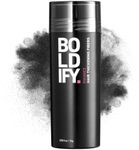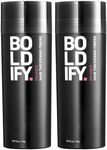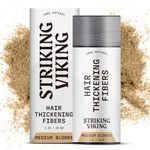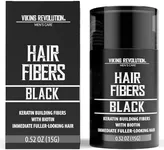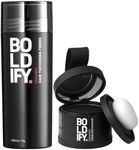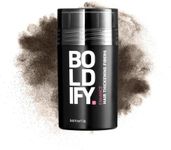Buying Guide for the Best Hair Fibers
Choosing the right hair fibers can significantly improve the appearance of thinning hair, giving you a fuller and more natural look. Hair fibers are tiny, hair-like particles that cling to your existing hair, creating the illusion of thicker hair. When selecting hair fibers, it's important to consider several key specifications to ensure you get the best product for your needs. Understanding these specifications will help you make an informed decision and achieve the desired results.MaterialHair fibers are typically made from either keratin, cotton, or synthetic materials. Keratin fibers are made from the same protein as human hair, making them a popular choice for a natural look and feel. Cotton fibers are also natural and can be a good option for those with sensitive skin. Synthetic fibers, while often more affordable, may not blend as seamlessly with natural hair. When choosing the material, consider your skin sensitivity and the level of natural appearance you desire.
Color MatchHair fibers come in a variety of colors to match different hair shades. It's crucial to choose a color that closely matches your natural hair color to ensure a seamless blend. Most brands offer a range of shades from black and brown to blonde and gray. If you're unsure, it's often better to go slightly darker rather than lighter, as darker fibers can create a more natural shadow effect. Consider your current hair color and any future changes you might make when selecting the right shade.
Hold and AdhesionThe hold and adhesion of hair fibers determine how well they stay in place throughout the day. Some fibers are designed to cling to hair using static electricity, while others may require a fixing spray for better hold. If you have an active lifestyle or live in a humid climate, you may want to choose fibers with stronger adhesion to ensure they stay put. Consider your daily activities and environmental factors when evaluating the hold and adhesion of different products.
Application MethodHair fibers can be applied in various ways, including shaking them directly onto the scalp, using a spray applicator, or with a precision applicator for targeted areas. The method you choose can affect the ease of use and the final look. Shaking fibers directly can be quick but may result in uneven application, while spray and precision applicators offer more control. Think about your dexterity, the areas you need to cover, and how much time you want to spend on application when selecting the method.
Water ResistanceWater resistance is an important factor if you want your hair fibers to withstand sweat, rain, or other moisture. Some hair fibers are designed to be water-resistant, providing longer-lasting results even in challenging conditions. If you live in a humid area, exercise frequently, or simply want peace of mind, look for products that specifically mention water resistance. Consider your lifestyle and the typical weather conditions in your area when evaluating this feature.
Scalp SensitivityIf you have a sensitive scalp, it's important to choose hair fibers that are hypoallergenic and free from harsh chemicals. Some products are specifically formulated for sensitive skin and can help prevent irritation or allergic reactions. Check the ingredient list and look for products that are dermatologist-tested or labeled as safe for sensitive skin. Your scalp health should be a priority, so consider any skin conditions or sensitivities you have when selecting hair fibers.




